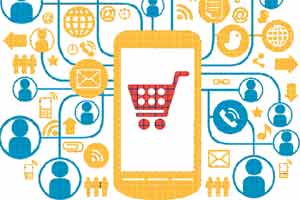Joe’s Facebook posts / Tweets
‘Saw a video of Samsung Galaxy S6 on YouTube. It’s an awesome phone with amazing features. Might end up purchasing one’
Two weeks later
‘Yay! after talking to my friends, researching online, visiting company website and reading product reviews, I finally purchased a Samsung Galaxy S6 from ABC store’
A simple Facebook post reveals a lot about the way consumers are making purchasing decisions and factors affecting the purchasing process.
According to an estimate, the number of social network users is expected to increase from 0.97 billion in 2010 to 2.44 billion in 2018. The 152% increase in eight years is tremendous considering the fact that it translates to an additional 1,470,000,000 connected users, more than the current total population of 223 least populous countries.
Today, it’s not only traditional marketing channels like television and radio that influence a consumer’s opinion about a brand. Considering the exponential rise in the number of social network users, internet penetration and smartphone adoption rate, marketing professionals need to customise their strategies to accommodate the influence of social media on the entire purchase journey from awareness to final purchase.
The final click on the ‘Purchase’ button on an e-commerce website or exchange of payment for a product at store is the last step in the process. It is the last step, but what about the purchase cycle?
Marketing today is a dialogue between brands and consumers where brands highlight their value proposition and consumers share their experiences in the form of reviews and testimonials. According to a survey published by online portal adweek, 61% of YouTube users and 56% of Facebook users subscribed to a brand page to learn more about products and services. Regardless of the stage consumers are in the purchase cycle, they are actively looking for information on social networks where brands highlight their features and services and explicitly or implicitly promote consumers to make a purchase. Based on her experiences, the consumer decides which brand to purchase and this makes it a closed deal for the brand. The channel of purchase is just a payment option, based on convenience and offers given by the e-commerce portal.
How can we forget ever-growing consumer generated content? Consumers are increasingly sharing their purchase and post purchase experience with a brand on discussion forums, blogs, reviews sites and other online platforms.
Unsolicited, real-time word-of-mouth publicity for a brand is a great influencer on the purchase decision for a prospective consumer. The importance of consumer reviews can also be assessed from the fact that companies such as Barista and HSBC have formed online communities where they promote consumers to talk about their category and brand. Harnessing the power of the latest tools and technology, machine learning algorithms and data processing capabilities, companies are mining consumer generated conversations to generate content to increase engagement levels with consumers, comprehend consumer’s pain points and identify new business opportunities.
Social media is emerging as a strong influencer in the sales funnel. Consumers begin with several brands, research for a few with regard to product features on the brand’s owned social media properties (Facebook page, YouTube channel, Twitter handle, Pinterest and other platforms), read consumer generated content on review sites, blogs, forums and testimonials and then make a purchase decision with regard to a brand. Once they have decided on the brand, they choose a channel of purchase (offline or online) based on past experience, security concerns and convenience. Hence, instead of considering impact of social media on online activities only, we should look at the holistic picture and consider its impact on every stage of the consumer purchase cycle.
In the ever evolving world of multi-channel marketing, it is very likely that traditional marketing channels like television will be used for building awareness among new prospects, and social networks will be used to enhance brand engagement, amplify consumer generated content and improve loyalty.
The author is director, analytics and head of the product and solutions group at Absolutdata.


